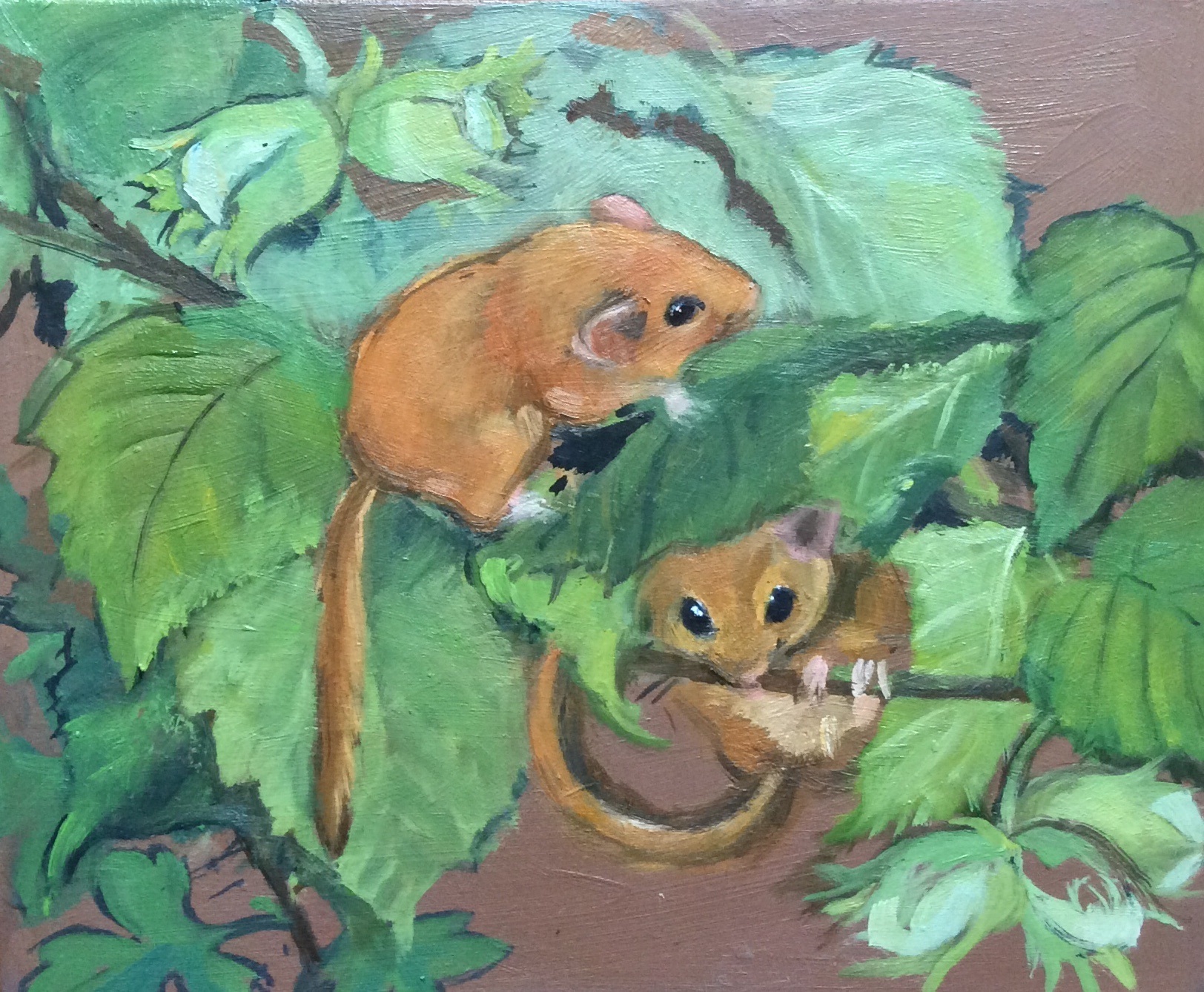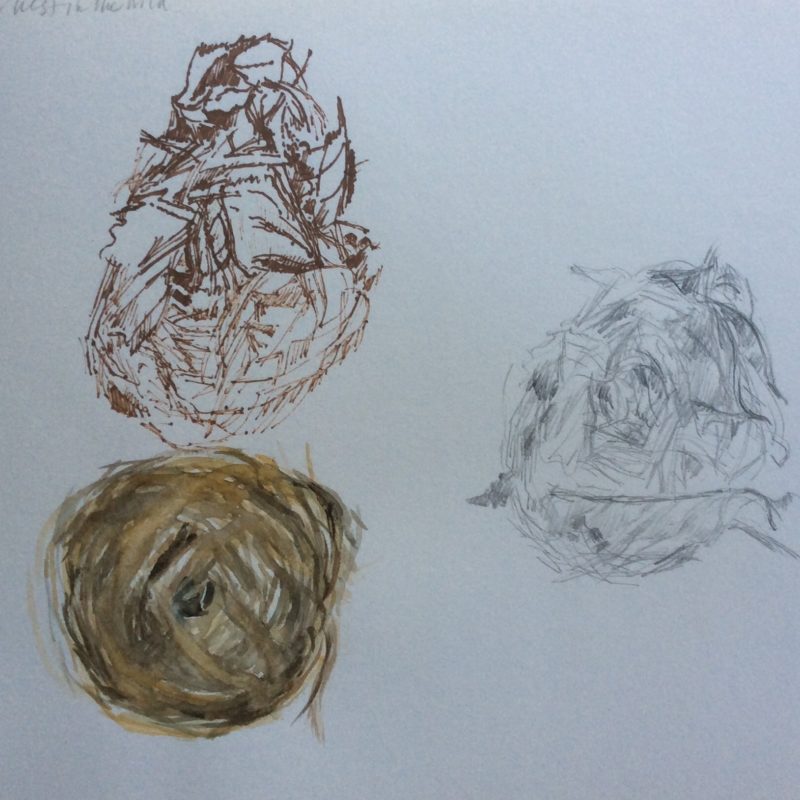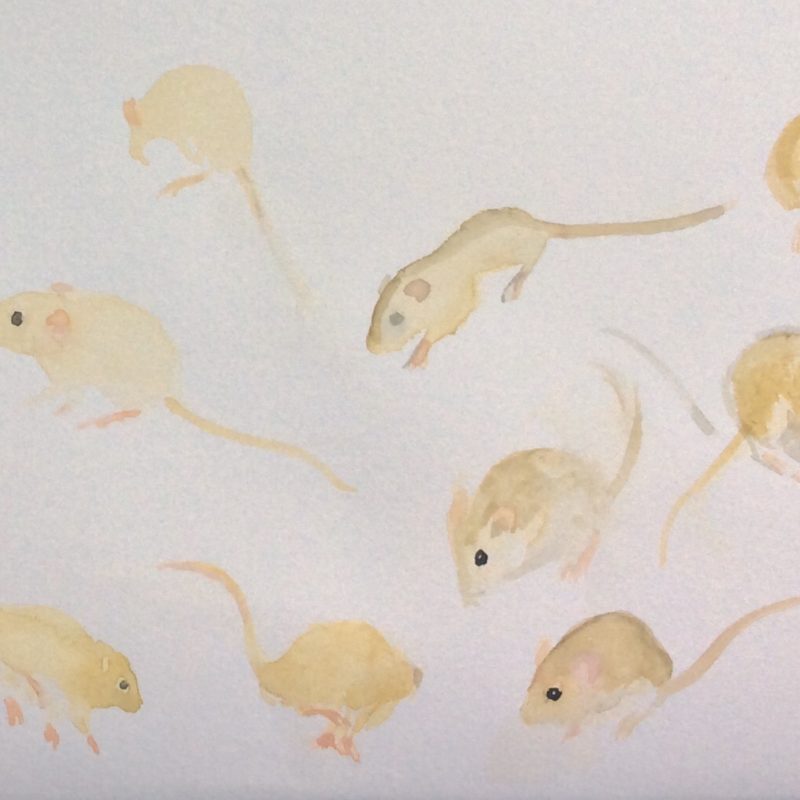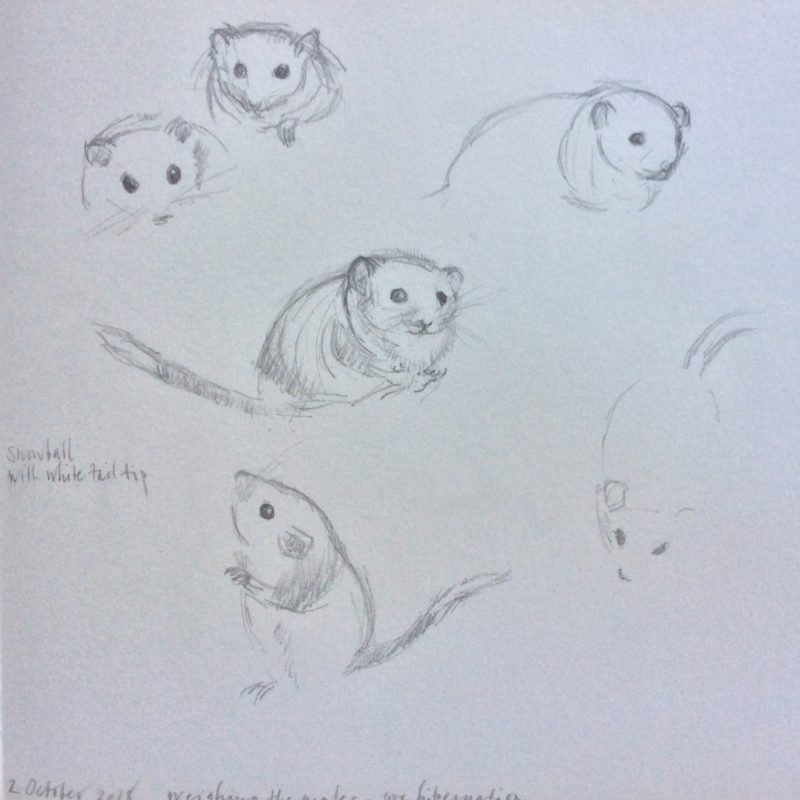Cathryn Kuhfeld – The Natural Eye Bursary Winner 2019 Report

It takes continuous observation and sketching to get to know how animals move and behave. Unless you do this, they can lack credibility, I am learning a lot through the process and I feel I have only just begun to scratch the surface.
Cathryn Kuhfeld
It all started with my paintings of one small woodmouse. Upon seeing these, someone asked me if I had any work of dormice — to which I said, I had never even seen a dormouse, let alone painted one. However, the idea piqued my interest and set me on the path to Wildwood, a local wildlife centre near my home in Kent. Wildwood has a hazel dormouse breeding programme, alongside their work with other small mammals and much else. The staff very kindly allowed me to visit and observe some of their dormice conservation work. I witnessed them settling down to hibernate in October last year. This involved them being checked over, weighed and having a teeth inspection. I met Snowball, a lovely male dormouse, who is unusual for having half a white tail. I did not see the dormice again for many months. They reappeared in late April, early May, because of the long, wet spring this year. Once they did emerge they proved difficult to observe as dormice don’t get up early, plus they are reclusive and mostly nocturnal! My time with the dormice has therefore been limited. Without Suzanne at Wildwood, I would not have managed to make the studies and drawings I have.
Both the dormouse and harvest mouse can seem ubiquitous – they are so frequently depicted in photographs, however, the nature of photography means can be deceptive. I discovered the dormouse is that lovely golden colour of Demerara sugar and they fit perfectly into the palm of a hand, but I could not have been more surprised to discover how tiny the harvest mouse is! Barely half a finger long, and paler in colour than I expected. I have been able to work from the harvest mice and a pair of water shrew called Wilfred and Wanda. It has been fascinating and also really taxing from a practical point of view, making demanding work. The harvest mice, besides being very small, are endlessly on the move, darting and leaping about. The water shrews are pretty busy creatures too, but they did prove rather easier.

It takes continuous observation and sketching to get to know how animals move and behave. Unless you do this, they can lack credibility, I am learning a lot through the process and I feel I have only just begun to scratch the surface. I am still visiting Wildwood and still working there. There is much else to work from among the many small mammals – quite apart from the birdlife, including a beautiful pair of ravens – which I find an exciting prospect. I am looking forward to carrying on and I am grateful for the Society of Wildlife Artists Bursary for spurring me on and aiding me with some very practical funds.



